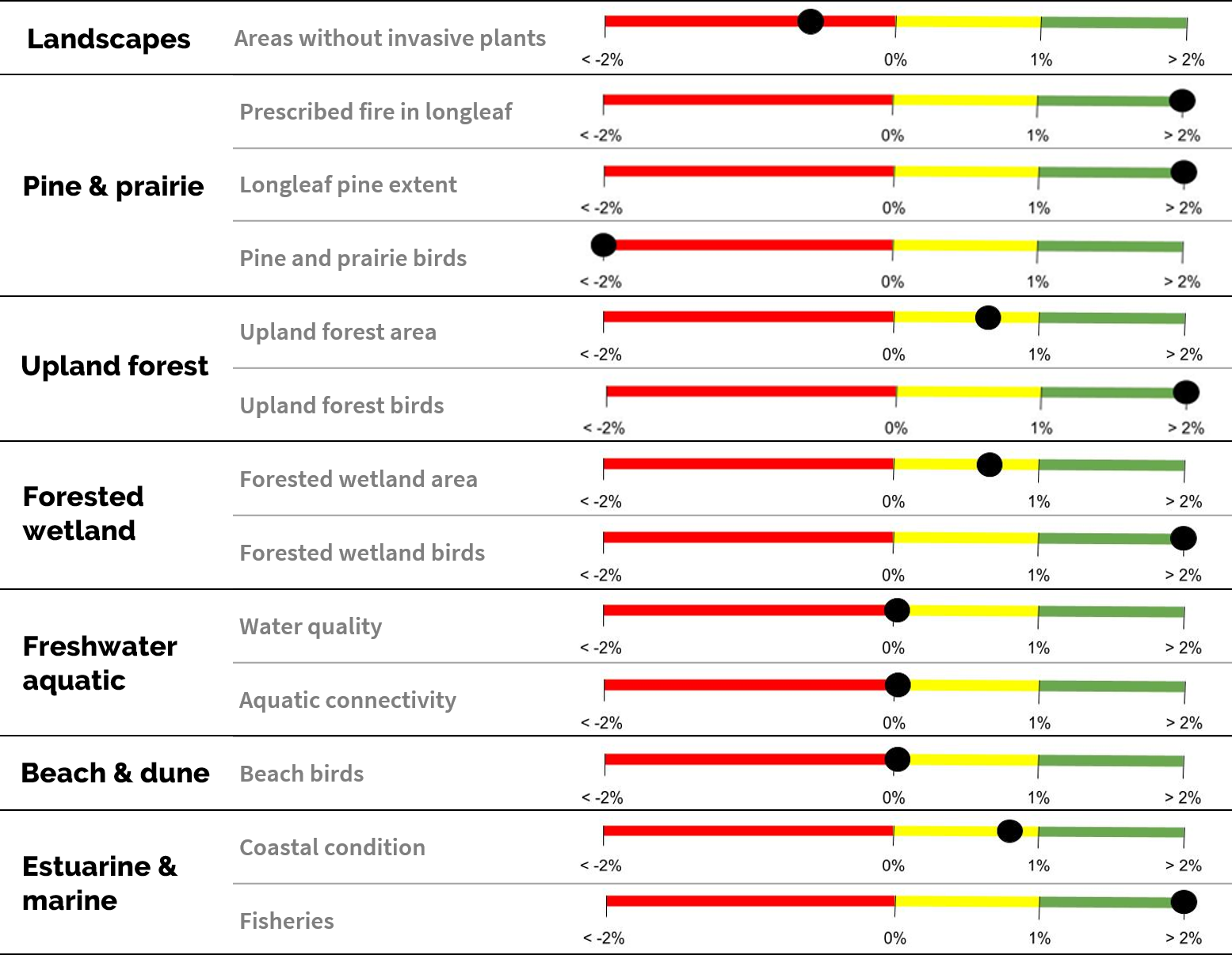Recent trends in Southeastern Ecosystems (2020) now available

This year’s report on progress toward the SECAS goal, Recent trends in Southeastern Ecosystems (2020), is now complete.
Significant improvements over the last version include:
- A new indicator for areas without invasive plants
- An improved approach for water quality trends based on state data
- Updated data for bird indicators and the prescribed fire indicator
- New maps and summaries showing bird indicator trends by Bird Conservation Region
You can access the report and learn more about the SECAS goal on this page of the SECAS website.
Like in last year’s assessment, most indicators continue to show improved conditions. That’s a good sign that all the great conservation work going on throughout the Southeast is having a big impact.
Also like in last year’s assessment, pine and prairie birds are the most off track in reaching the SECAS goal. With the new bird conservation region summaries, the 2020 report shows that the Central Hardwoods, Appalachian, Piedmont, and Peninsular Florida regions are the most behind. There were also concerning declines in pine and prairie birds within the longleaf range, despite significant increases in prescribed fire and longleaf area.
The other indicator with a negative recent trend was areas without invasive plants. That shouldn’t be too much of surprise given the invasive challenges we’re facing from climate change and development. The surprise to me was how much progress is being made in many states with some really tough species. So, a big shout out to folks working on managing invasive plants.